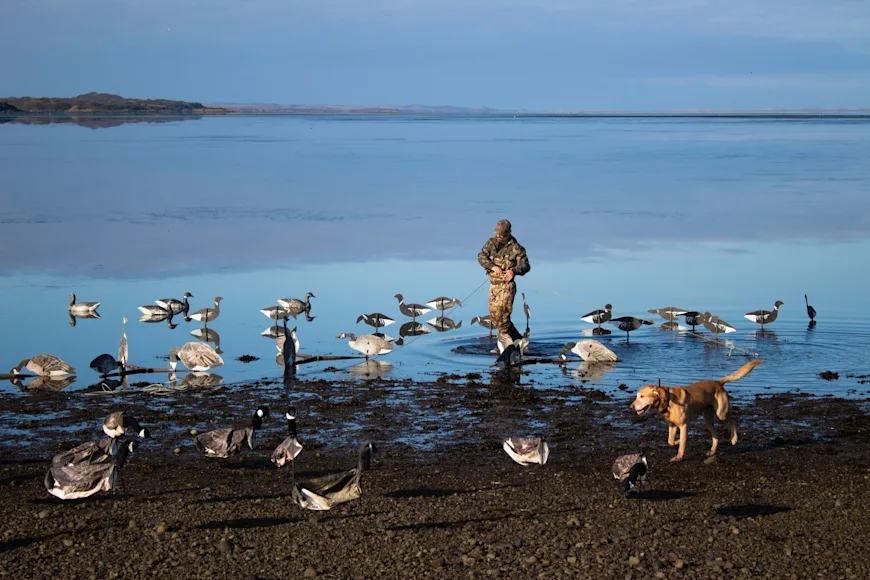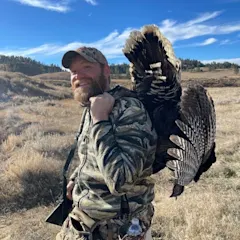The U.S. Fish & Wildlife Service (USFWS) has been setting and regulating waterfowl seasons across the country for more than a century, and one of their primary tools for doing so is the annual waterfowl survey, which kicks off in May each year. Touted as the world’s gold-standard wildlife survey program, it helps determine bag limits for waterfowl seasons throughout the U.S. and Canada by tallying up bird numbers and the number of ponds present in key breeding habitat, like the Prairie Potholes.
This year, the survey has been thrown into a state of uncertainty as unprecedented downsizing has brought widespread firings, facility closures, and deep budget cuts to USFWS. According to conservation partners who work with the Service regularly, concerns arose earlier this year after USFWS lost an untold number of pilot biologists to cuts implemented by Elon Musk's Department of Government Efficiency (DOGE).

Sen. John Boozman of Arkansas cited concern from duck hunters in his state during a recent confirmation hearing for Brian Nesvik—Pres. Trump's nominee to head up USFWS. "Arkansas and other states have benefitted directly from...the annual Fish and Wildlife Service survey that’s used to manage seasons," Boozman said. "However, those surveys are at risk due to declining support and funding."
An Insider's Perspective
Brad Bortner is a retired 33-year veteran of the USFWS who served as Chief of Migratory Bird Management from 2011 to 2018. He worked as a regional chief for the migratory bird and habitat programs for 18 years before that and began his career with the Service as a staff biologist in 1987.
Bortner tells Field & Stream that the annual waterfowl survey relies on experienced pilots with highly specialized skills, but also on more junior-level employees. "Each region provides relatively junior probationary employees for doing the on-the-ground portion of the surveys or being aerial observers," says Bortner. "If there’s a decrease somewhere in the Fish & Wildlife Service, particularly at refuges and the Division of Migratory Bird Management, it will effect the staffing for the surveys."

Bortner worries that the US Fish & Wildlife Service—an agency that's long been underfunded and understaffed, he says—is in no position to conduct the rigorous annual survey after being hallowed out by DOGE. "They’re down now to the point where they are cutting real meat," he says. "Anything that was nice to have but not absolutely necessary has been cut. The consequences of what’s going on right now—the firings of probationary employees, spending freezes on employee's credit cards, and everything else—are having an impact."
According to Bortner, in order for bird surveys to go off without a hitch, aircrafts need periodic maintenance, electronic subscriptions for the planes' instruments must be constantly renewed, and pilots need Canadian visas to work effectively across international borders. "In order to become a pilot biologist for the Fish and Wildlife Service, you need a commercial license, a number of hours in the air, and then you have to have the seat time just learning the survey areas and learning the survey techniques," he notes. "If they’re cutting back on contracts and that sort of thing, that could jeopardize the survey. There are a number of those pilots who are senior enough that if things get chaotic—and they don’t feel like they’re being supported or there isn’t going to be the money to fly the surveys safely—then if they’re offered voluntary early retirement, they might take it."

Just last week, the Department of the Interior, which houses USFWS, sent another mass email inviting employees to take early buyouts from their careers (or deferred resignations) ahead of yet another round of pending layoffs. "To maximize workforce efficiency, the Department is planning for reduction in force," the letter reads. "With limited exceptions, the Department intends to allow all full-time, permanent employees, including those in their probationary or trial periods, the opportunity to participate in the DRP [Deferred Resignation Program]."
First obtained by reporter Jimmy Tobias, the April 4 letter was issued by Stephanie Holmes. The Department of Interior's Acting Chief Human Capital Officer, Homles has been identified as DOGE's lead HR expert by Public Domain, Wired, Politico, and the New York Times.
Potential Hunting-Season Disruptions and Anti-Hunting Lawsuits
According to Bortner, DOGE's slashing of USFWS puts more than just annual bird surveys at risk. “There is no [duck] hunting season unless the US Fish & Wildlife Service opens it,” he points out. "The Migratory Bird Treaty Act says that the Secretary of Interior has to base that decision on some information, some data—and having the whole science program upended puts all of migratory bird hunting in jeopardy."
Those implications reach beyond waterfowl seasons as well, Bortner says. "There are somewhere between two and three million migratory bird hunters in the U.S. today," he says. "There are nearly one million mourning dove hunters in Texas alone. There are a lot of hunters out there who rely on the US Fish & Wildlife Service."

Bortner worries that defunding of science-based data gathering efforts—like bird survey and summertime bird-banding programs—will open the USFWS to lawsuits from notoriously litigious anti-hunting organizations. "It used to be a fairly regular occurrence for the Fish & Wildlife Service to get challenged in court over migratory bird hunting," he says. "Over the last 30 years, we’ve been able to prove that we have the scientific information in order to sustainably manage migratory birds, and that was based on good science. I’d hate to see any of that jeopardized, which could jeopardize our hunting seasons."
He says that even a temporary disruption in data gathering could open the Migratory Bird Program up to litigation from anti-hunting groups. Population models rely on uninterrupted year-to-year banding efforts, for example—and information from previous years is used to assess future conditions. "If you start missing years, not collecting information, it ends up weakening the strength of that science and putting holes in the data set," he adds. "I think if they [anti-hunting groups] saw a chink in the armor they may take advantage of that. That could be an unintended consequence of this break-it-and-we’ll-fix-it-later approach that we’re seeing."

The Future of Duck Hunting at a Post-DOGE USFWS
With the annual waterfowl survey less than a month out, some wonder if USFWS will employ a novel technology in lieu of a fully-staffed roster of experienced pilots and on-the-ground bird counters. Others speculate that the survey could be outsourced to private industry.
Bortner says privatization would be a mistake. "There’s a lot of interest in the current administration in privatizing things," he said. "I don’t think there’s a value proposition for privatizing this function. You’re not going to find private-sector companies that specialize in sustainable migratory bird regulation setting."
Read Next: Congress Eyes Public Land Sell Off as Part of Special Budget Package
He argues, instead, for keeping the the Service intact—for giving it the funds it needs to manage migratory birds, maintain the more than 500 Wildlife Refuges across the county, and to serve the American hunters who pursue birds by the millions each fall. "I think about the return on investment," he says. "The Migratory Bird Program in total has a budget of less than $40 million. But migratory bird seasons return billions of dollars in the way of revenue from hunting licenses, guns and ammo, fuel, hotels, guide fees—all those things. Anytime you can invest $40 million and get back billions in return, that's a pretty good deal in my book."


